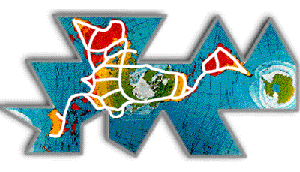|
Master EcoModder
Join Date: Aug 2012
Location: northwest of normal
Posts: 28,816
Thanks: 8,183
Thanked 8,953 Times in 7,395 Posts
|
#5 at 6:22 >> #18 at 11:45 -- Seems to be a 'third rail' issue. 
Quote:
|
Originally Posted by redneck
Last time I checked the sun doesn’t shine and *the wind doesn’t blow at night.*
|
You should add '...at this time in this location, YMMV'.
Quote:
base load
International, interhemispheric*, latitudinal, and longitudinal grid inter-ties, across all time-zones, plus grid-scale batteries. That includes nukes.
Re-regulated and state-owned if necessary.
Dollar-a-year-men and a Civilability Industrial Complex.
|
* Fuller's Bering Straits interconnect.

Quote:
[By Michael Powers © 1990, 1996
Synopsis
Conventional wisdom holds that the electric utility industry is driven by economic growth, rather than driving such growth; power consumption goes up in a growing economy, for instance, and declines in a slowing one.
....
An even more ambitious strategy -- but with a potentially bigger payoff -- is the proposal to develop a global electric energy grid to transmit power from continent to continent just as present-day communications networks move information and finances globally at the speed of light.
The first phase of such a project would be development of the East/West Energy Bridge, a high-voltage, direct current (HVDC) intertie that would link transmission lines in Alaska with those in Siberia, using an underwater cable across the Bering Straits. Such an intertie would permit bulk power transfers between the U.S. and (former) Soviet Union, taking maximum advantage of the difference in power demand between the dayside and nightside of the planet.
The cost of the Energy Bridge is estimated to be $5 billion -- less than two conventional power plants -- but could save U.S. consumers many times that amount by mid-decade, given the savings already being realized through domestic power pooling.
The linkage would create the first truly global market for electricity and also serve as a U.S. gateway for selling exported energy in Pacific rim markets, including the world's most populous nation, China. About 25% of the world's population lives within four time zones bridging 90-120 degrees East longitude (compared with 8% in all of North America), many of whom have yet to receive electrical service.
An international market for electricity also provides a long-range strategy for developing renewable energy resources, such as solar, wave, wind, OTEC, etc. Energy from these sources tends to be transient or intermittent and is now discouraged by utilities in favor of power which is more dependable and more easily dispatched. In a large international market, however, even these sources find their niche, if only on a spot or auction basis.
Much of the conceptual work for this project was done in the early 1970's, in workshops led by engineer and inventor, R. Buckminster Fuller. In a 1971 study, the Natural Resources Committee of the United Nations corroborated the desirability of developing "intercontinental grid systems." In 1984, a World Bank Energy Department paper concluded that developing a regional power pool for the isthmus of Central America would revitalize local economies and save $1 billion annually in utility operating costs alone.
|
Electric Utilities: Changing Industry, Instrument of Change
I just went looking for the illustration, but this article, from 1990 about work done in the 1970s, is as relevant today as it was then.
Fuller put the tools on the shelf for when we would need them. (*couch*graphene*cough*) He'll be as important as Leanardo Da Vinci in 200 years.
__________________
.
.Without freedom of speech we wouldn't know who all the idiots are. -- anonymous poster
____________________
.
.Three conspiracy theorists walk into a bar --You can't say that is a coincidence.
|